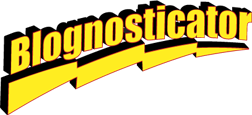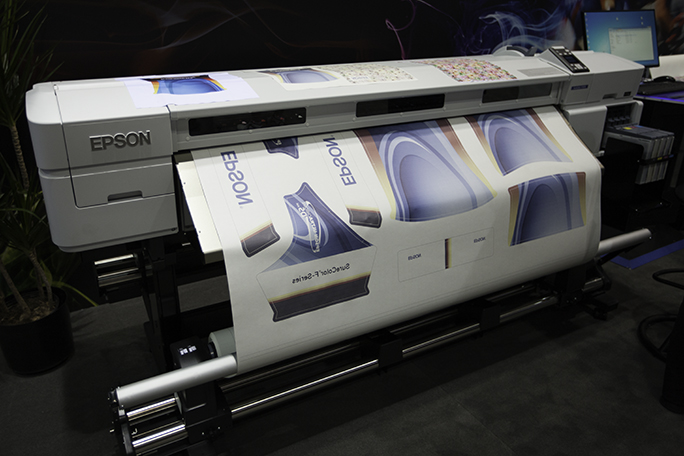
My friends at Epson were showing a couple of new ink-jet printers at PRINT13, printers which are designed to fit into the fabric printing industry.
I’m working on a project right now that involves dye-sublimation printing, and I was impressed by Epson’s new offerings. The company has two, which are the 64-inch-wide SureColor SC-F7000, and a 44 inch version of the same printing technology.
The Epson dye-sublimation printer at PRINT13. The company was printing on dye-sub paper, and showing examples of fabric transferred from the paper. These printers feature roll take-up, and very large ink reservoirs (on the extreme right end of the photo).
My project will be described in a blog in the near future; it’s a major development for me, and I will share it with the world in a week or two. Part of that project will be some large sheets of Lycra fabric sublimated from paper imaged an ink-jet dye-sublimation printer.
Though I have toured the plant that will be doing my printing, and I have seen numerous dye-sublimation devices at the trade shows, I have not done much of this kind of printing myself. That’s about to change.
Dye-sublimation printing on fabrics is done by imaging backwards onto paper, then pressing that material against a synthetic fabric – Lycra polyester is the most common – and applying heat to the sandwich. The heat activates the dyes, creating a gaseous state to occur. The colorants in their gaseous state are then transferred to the polyester material. The result is a colorfast image with brilliant color, tremendous saturation, and reasonable resolution (limited by the weave of the fabric itself).
At PRINT, the Epson 64-inch dye-sublimation printer was printing fabric images onto paper, which was then rolled-up onto a take-up spool. The company did not have the transfer press at the show – that comes from another manufacturer – but they did have many beautiful samples to share with visitors to their booth.
Also on display at the show was a one-off shirt printer that uses fabric inks to image onto cotton and cotton-blend T shirts. That printer is capable of printing short-run production. The demonstrations of that printer were also impressive. The color looked beautiful, and the speed seemed to be reasonable for making one-off or short-run T shirt runs.
I’m looking forward to telling you about my big dye-sublimation printing project. Keep an eye on The Blognosticator to learn about it!


What is the difference between Bachelor of environmental design (architecture) and bachelor of design?
In the case of our university, a Bachelor of Environmental Design is from one department, Architecture and Environmental Design, while the other, a Bachelor of Design connotes a degree in fine art, specifically Applied Art & Design.
In our university, this could be graphic design, or it could be one of several applied arts including painting, ceramics, sculpture or photography.
Brian